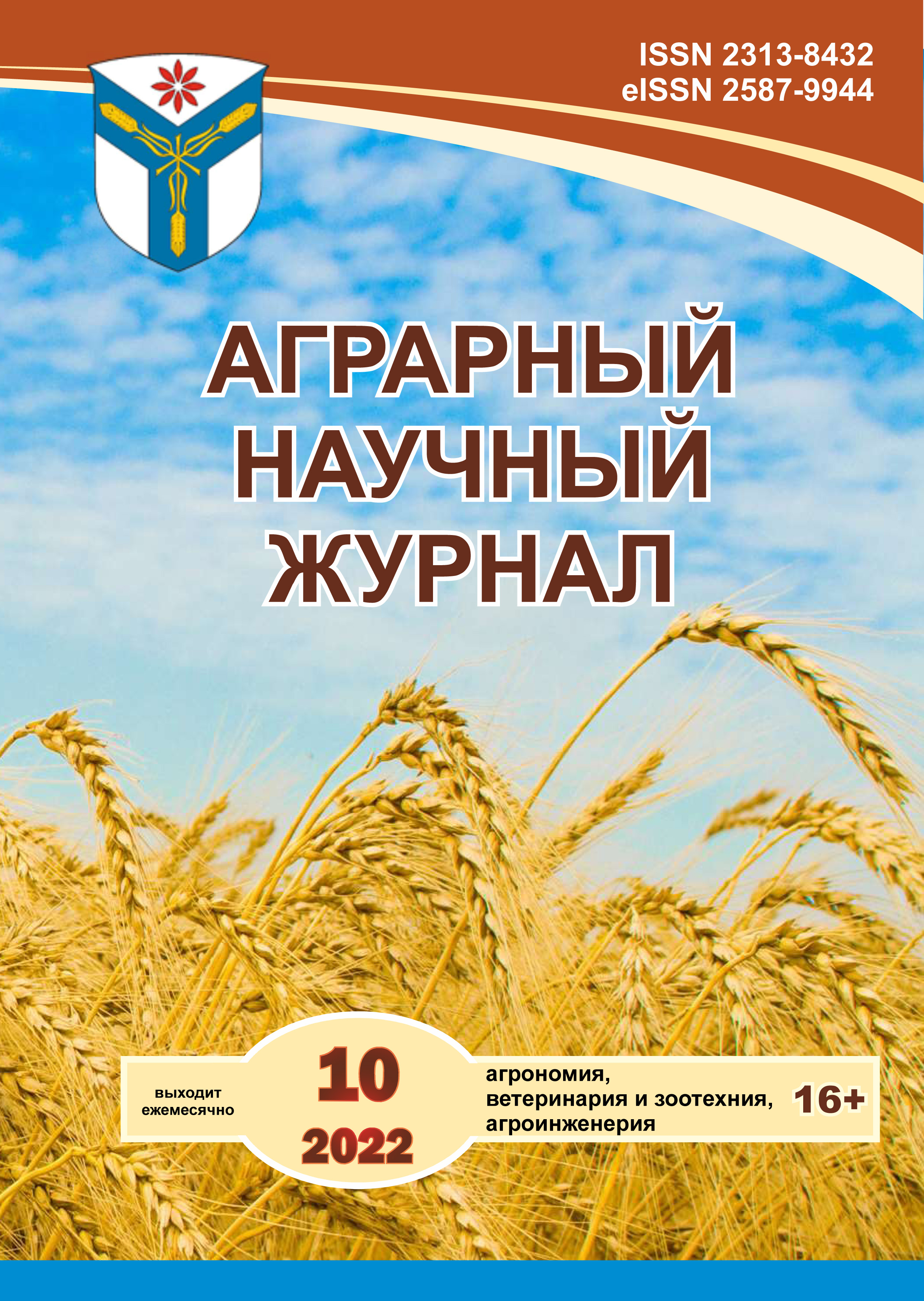The influence of gamma irradiation on the storability and biochemical parameters of potato tubers
DOI:
https://doi.org/10.28983/asj.y2022i10pp50-54Keywords:
potato, variety, gamma irradiation, store ability, biochemical parameters, potato processingAbstract
Potato storage is a complex technological process aimed at reducing weight losses and maintaining the biochemical and consumer indicators of tubers at an appropriate level. Depending on the storage temperature, the amount of losses on sprouts in the overall structure of waste can be a significant. Currently, in most European countries, the use of a classic potato tuber germination inhibitor based on the active ingredient chlorprofam is prohibited for environmental reasons. In this regard, an alternative method of restraining the germination of ware and intended for industrial processing potatoes based on the use of gamma irradiation is of interest. Studies on gamma irradiation of tubers using 60Co were conducted in 2019-2021 at the Russian Institute of Radiology and Agroecology (Obninsk), followed by storage of potatoes in cold storage chambers of the Russian Potato Research Centre at two temperatures - 6-7 °C and 9-10 °C. The studied radiation doses were 15, 25 and 50 Gy. It was found that potato weight losses during storage depended mainly on temperature (influence of factor 42.2%) and gamma irradiation (influence of factor 42.2%). For ware potatoes (6-7 °C), gamma irradiation doses of 15 and 25 Gy were optimal; for potatoes intended for processing into fried products (9-10 °C), - 50 Gy. Irradiation at these doses significantly reduced the germination of tubers and the amount of total losses during storage. At a storage temperature of 9-10 °C and irradiation dose of 50 Gy, there was also noticed a decrease in reducing sugars content in tubers by 2-2.5 times, which made it possible to obtain the final product when frying of higher quality in terms of color. There was no significant effect on the content of dry matter, starch, nitrates and vitamin C in tubers. After irradiation doses of 25 and 50 Gy a slight decrease in protein content was noticed.
Downloads
References
Доспехов Б.А. Методика полевого опыта (с основами статистической обработки результатов исследований). - 5-е изд., перераб. и доп. М.: Агропромиздат, 1985. 351 с.
Иваницкий Ю.А. Радиационный гормезис. Благоприятны ли малые дозы ионизирующей радиации? // Вестник ДВО РАН. 2006. С. 86-91.
Кодекс Алиментариус. Облученные продукты питания / Пер. с англ. М.: Весь Мир, 2007. 24 с.
Мальцев С.В., Пшеченков К.А. Современная технология хранения картофеля, предназначенного для переработки на обжаренные картофелепродукты // Картофелеводство: Материалы научно-практической конференции. М., 2017. С. 313-320.
Мальцев С.В., Пшеченков К.А., Зейрук В.Н. Влияние химических и физических методов воздействия на клубни картофеля различного назначения при хранении // Радиационные технологии в сельском хозяйстве и пищевой промышленности: состояние и перспективы: материалы Международной научно-практической конференции. Обнинск, 2018. С. 285-289.
Мейсель М.Н., Черняев Н.Д. Научные и практические вопросы лучевой стерилизации и пастеризации. Вестник АН СССР. 1956. № 11. С. 38-45.
Метлицкий Л.В., Рогачев В.И., Хрущев В.Г. Радиационная обработка пищевых продуктов. М.: Экономика, 1967. 160 с.
Методические указания по оценке сортов картофеля на пригодность к переработке и хранению / К.А. Пшеченков [и др.]. М., 2008. 39 с.
Перспективы использования радиационных технологий в агропромышленном комплексе Российской Федерации / Р.М. Алексахин [и др.] // Вестник РАЕН. 2014. № 1. С. 78-85.
Хранение картофеля / К.А. Пшеченков [и др.]. М., 2016. 144 с.
Abolhasani A., Barzegar M., Sahari M.a. Effect of gamma irradiation on the extraction yield, antioxidant and antityrosinase activities of pistachio green hull extract // Radiation Physics and Chemistry. 2018. V. 144. P. 373–378.
Briddon A., Cunnington A.C., McGowan G., Ji na, A.H.J. Duncan. Developments in CIPC application and its effects on processing quality. In: Abstracts of papers and posters // 16th Triennial Meeting of the European Association for Potato Research (Eds. E. Ritter and A. Carrascal). 2005. Paper 89. P. 364-365.
Jargis S.V. Hormesis and radiation safety norms // Human & experimental toxicology. 2012. Vol. 31. P. 671-5.
Kurbangaleev Y., Konyukhov G., Nizamov R., Velikanov V., Aslanov R. Influence of radiation various doses on food products and feeds // Key Engineering Materials. 2018. 781 KEM. P. 190–194.
Thomas P. Radiation preservation of food of plant origin. Part I. Potatoes and other tuber crops // CRC Critical Reviews in Food Science and Nutrition. 1984. Vol. 19. P. 327-370.
Downloads
Published
Issue
Section
License
Copyright (c) 2022 The Agrarian Scientific Journal

This work is licensed under a Creative Commons Attribution-NonCommercial-NoDerivatives 4.0 International License.








